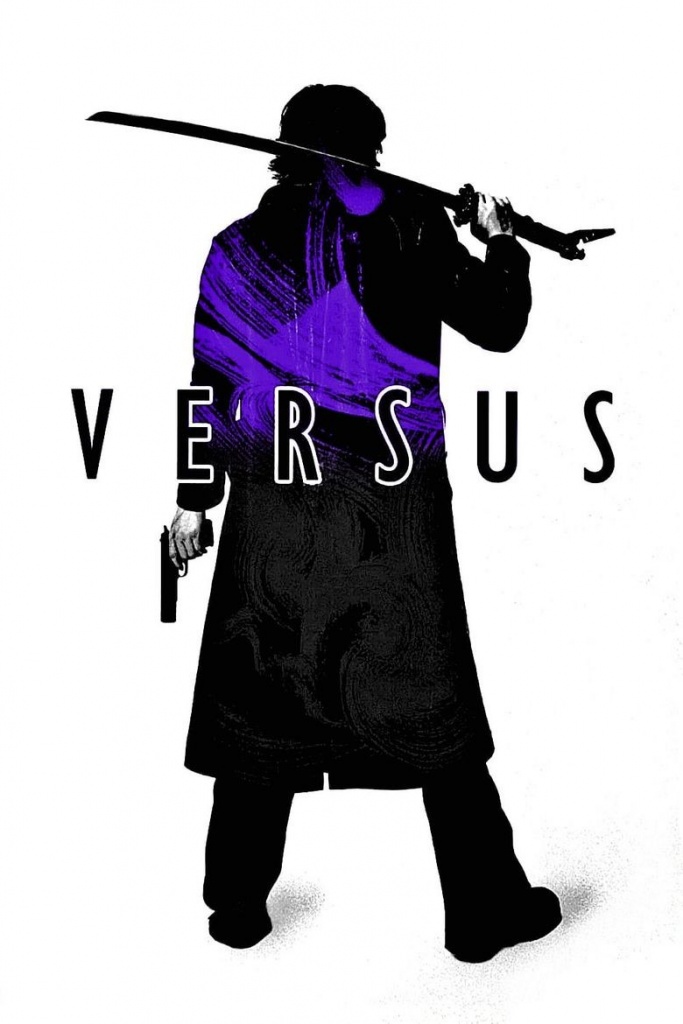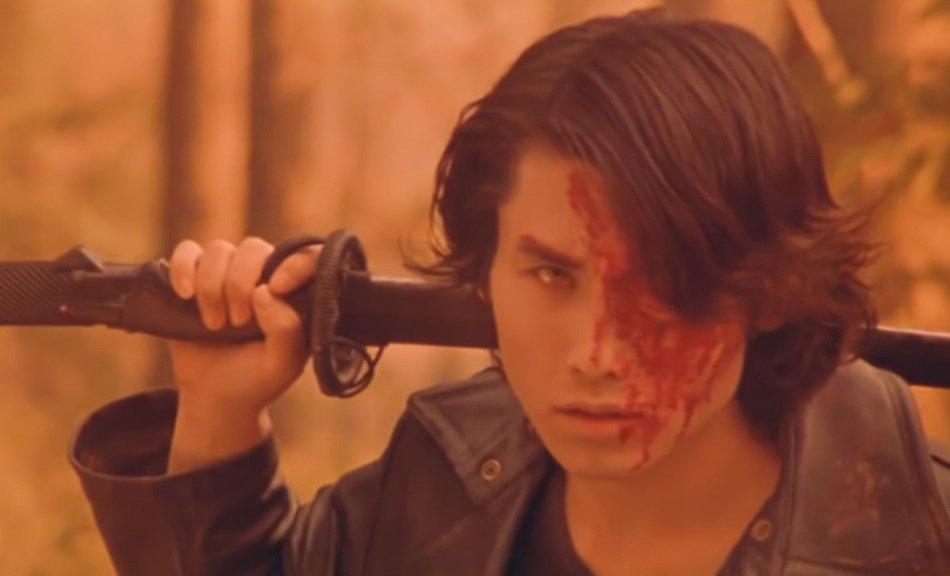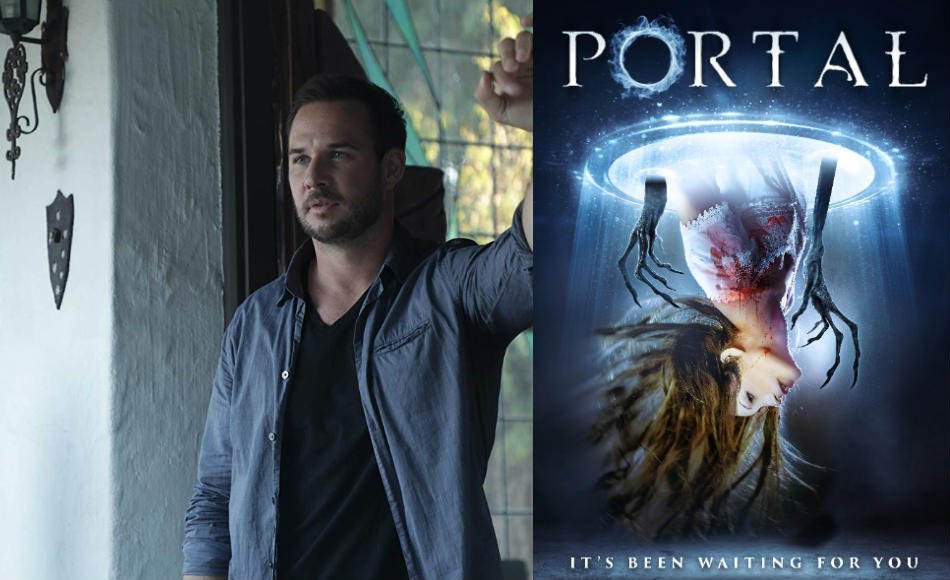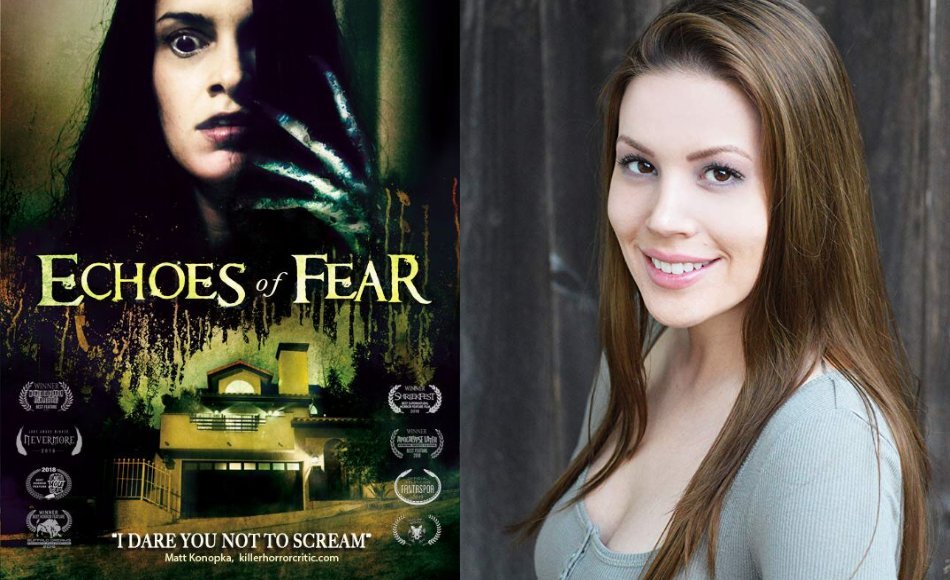There is a strong adoration for Asian horror movies here in the West, but it is an unfortunately limited one. When J-Horror is mentioned, nine times out of ten the conversation drifts to horror movies starring long-haired vengeful ghosts of the onryō variety, completely skipping over a vast collection of genre-benders. A couple months back, we reached the 20th anniversary of such a film, one that put a now loved cult director on the map and is a prized collector’s item in certain film buff circles, the zombie-flaying gonzo masterclass of Ryuhei Kitamura’s, Versus.
Plot: There are 666 portals that connect this world to the other side. These are concealed from all human beings… But there are some who notice their existence. Somewhere in Japan exists the 444th portal, known as The Forest of Resurrection, when Prisoner KSC2-303 escapes from a maximum-security jail, he enters the forest believing it will lead him to a safe haven. Instead, he finds himself a pawn in an endless struggle. His opponent: a mysterious man who seemingly cannot be killed and in pursuit of a beautiful woman who holds the power to grant eternal life. But what Prisoner KSC2-303 cannot remember is whether he is the personification of good or the very essence of darkness.
Director: Ryûhei Kitamura
Writer: Ryûhei Kitamura and Yudai Yamaguchi
Runtime: 120 minutes of undead slicing and dicing.
Rating: NR because ratings are for sane films.
Cast: Tak Sakaguchi (Prisoner KSC2-303), Hideo Sakaki (The Man), Chieko Misaka (The Girl), Kenji Matsuda, Yuichiro Arai, Minoru Matsumoto, Kazuhito Ohba, Takehiro Katayama, Ayumi Yoshihara.
Fight for Your Right to Fight
Versus has an interesting production history in that it began as a sequel to Kitamura’s Down to Hell but quickly morphed into something else entirely for reasons unimportant to the finished product except for one, the title. In the context of the movie, it stands for the destiny of the hero and villain, locked forever in battle through various lives and reincarnations. Outside the film, it reflects how the movie itself was a fight to be made, and how Kitamura’s entire career and philosophy had been a melee against the Japanese film industry and the types of films it had been making.
In many ways, Kitamura kickstarted the return to teeth gritted psychotropic genre-combining action movies that we adore from Japan, but they had stopped seeing as viable. Kitamura had inspirations and opinions on what types of films Japan should be and could be making, most notably bringing back chanbara, the sword-fighting film, that in his mind was Japan’s cinematic heritage.
In an interview with Midnight Eye from 2004, Kitamura lamented that, at the time, producers in Japan had zero interest in what he called “entertainment movies,” feeling the likes of America and Hong Kong had the market cornered. He branded his production company Napalm Films with the attitude of financing and producing himself, first making Heat After Dark and Down to Hell, movies that are essentially early concepts for what would become Versus.
It’s funny looking back now at the films Kitamura has made since his against-the-grain DIY days, such as Godzilla: Final Wars, The Midnight Meat Train, Azumi and the live-action Lupin The Third, and marveling at how a decision like taking your friends out into the woods and blowing zombies up would amount to so many classics that never would have been made otherwise.
But the same could be said for Sam Raimi or Peter Jackson and many others. Kitamura is definitely, beyond a shadow of a doubt, in the Raimi and Jackson camp with Versus being his The Evil Dead or Dead Alive. An explosion of influences, love and not-knowing-any-better ingenuity that bursts onto your screen in a way a movie is not supposed to work but does anyway.

J-Horror Gets A .44 Caliber Kung-Fu Kick to the Face!
“Live-action anime,” is a phrase that is bandied about quite often but rarely feels earned, but oh boy, does Versus ever earn it. The minute zombies pull out guns and start shooting back, you know you are in good hands. That is to say nothing of the “hyper zombies” who soon show up, acting as anime sub-bosses for our nameless dark hero.
It is a cacophony of blazing guns, one-liners, screwball comedy, a hero who knows just when to whip his coat like a cape for maximum effect, martial arts and sword fighting galore. Does a lot of it make sense? Hell no, but not for lack of talent. A team of passionate filmmakers gathered together with next to no money in a random Japanese forest to make the most fun and bonkers thing they could think of.
Bouncing between ludicrous self-seriousness and winking at the camera comedy, Versus is kind of indescribable. The action is top-notch and the main draw, functioning mainly as one very long fight scene with minimal dialogue. It wears influences on its sleeve like a badge of honor, with an opening flashback to feudal Japan shot in a completely different style as to evoke Akira Kurosawa, before switching gears to the likes of Tarantino, Russell Mulcahy’s Highlander, Mad Max, John Carpenter, John Woo, Sam Raimi… the list goes on.
Often when this is done, it is amateurish, coming across more as a filmmaker having no vision of their own, settling for aping others in order to construct something that seems cool and original on the surface. In the case of Kitamura, he is actually a filmmaker loaded with vision, who knows exactly what he’s doing, dumb warts and all and he loves it.
The influences that Versus plays in reminds you of the way Tarantino recalls his chop-socky influences in the Kill Bill movies; the horror film never shies away from them, uses those influences to enhance what’s already apeshit about the film, and what’s apeshit about it is all Kitamura.
Tak Sakaguchi, who plays our enigmatic hero, Prisoner KSC2-303, was cast after Kitamura met him in a street fight, which is a piece of trivia you could not make up if you tried. The natural charisma and real-life toughness from Tak strikes a lean and cool anti-hero that perfectly butts heads with the tonally all-over the place secondary cast and dead-serious lead villain. From Kenji Matsuda’s tongue-flicking Joker-like cartoon character Yakuza to Takehiro Katayama’s gravity-defying red-haired ninja, despite no character actually having a name, each one is memorable and stands out.
Hell, personally, I could watch an entire movie just about the two cops on the trail of our lead hero, one of which is walking around with a bloody stump where his hand should be after emerging from a car wreck.
But for all the silliness, Hideo Sakaki’s main villain, the ancient and immortal figure known only as The Man actually makes for a damn effective antagonist beyond the zombified proceedings. Purposely dressed down in fast-casual clothing to contrast against the dressed-up Yakuza members he’s in charge of and the too-cool look of our main hero in order to highlight just how powerful he is, The Man has a mysterious but dangerous quality that perfectly builds him up for the epic sword battle that encompasses the entire third act.
What a third act it is, too, considering the horror movie has been non-stop zombie slaying, gun fighting, arm-slicing, bloody mayhem, but as soon as it kicks into Highlander style battle for the fate of the world, your eyes are glued. Kitamura only slows down but once, moments before the culmination of the fight, in a shot that brings to mind Samurai cinema of old, where the two figures stop, all sound and pulse-pounding score cease, as you know the next blow will be the finale, and a victor will be crowned.
If you have not gotten the impression yet, Versus is really fun.

All 666 Ways to Die
A stylish hybrid of horror, action, comedy and cartoon insanity, Versus is unlike anything you have seen and a party movie if there ever was one. It shows off how J-Horror is sometimes more capable of cooking up schlocky insanity than American horror movies of the like, and their library deserves a closer look beyond the odd Grudge release. In a way, Versus is a code that can be passed among friends and film circles like an exclusive club membership.
Nothing sums up the production and creative energy that went into the horror film better than the fact that Kitamura and crew were armed with a single severed-head dummy, which had to be cleaned and re-dressed every day. With that one prop and a whole lot of blood, sweat and tears—and maybe some more blood—cult film history was made.
Versus is one of those movies that can be a challenge to find, but you can purchase or rent the digital version of the horror film through Amazon Prime, and there are DVDs issued by TokyoShock for pretty cheap between Amazon, eBay and other sources. This is where it gets tricky, though, as this article focused on discussing the theatrical cut of the film first and foremost, what has not been mentioned is the longer cut of the picture.
A few years after its release and subsequent embrace from international audiences, Kitamura and crew went back out into the woods and filmed additional scenes of the action and plot type to create his preferred version of the film. This new cut, dubbed, Ultimate Versus, stands at 130 minutes, ten longer than the theatrical.
There is also an R-rated cut that can be found which removes much of the gory good stuff if you really want to be a hardcore collector.
Frustratingly, these cuts are split between various releases, but on the upside, they are chock full of special features and fun bits. Nearly everything from production was recorded in B-roll, so you can even see the moment Tak Sakaguchi broke his tooth and had it super glued back in on set! So, while it takes a lot more effort than needed to collect it, there is a rewarding payoff.
If you have not checked out Versus in these last twenty years, now is a perfect time. Celebrate its ass-kicking birthday and find yourself becoming a lifelong fan of Ryuhei Kitamura. But most of all, remember that horror movies can be anything, and filmmakers worldwide that work in that genre have so much more to offer than the expected baseline that often defines their culture and locale, so give it all a watch, you won’t be sorry.







